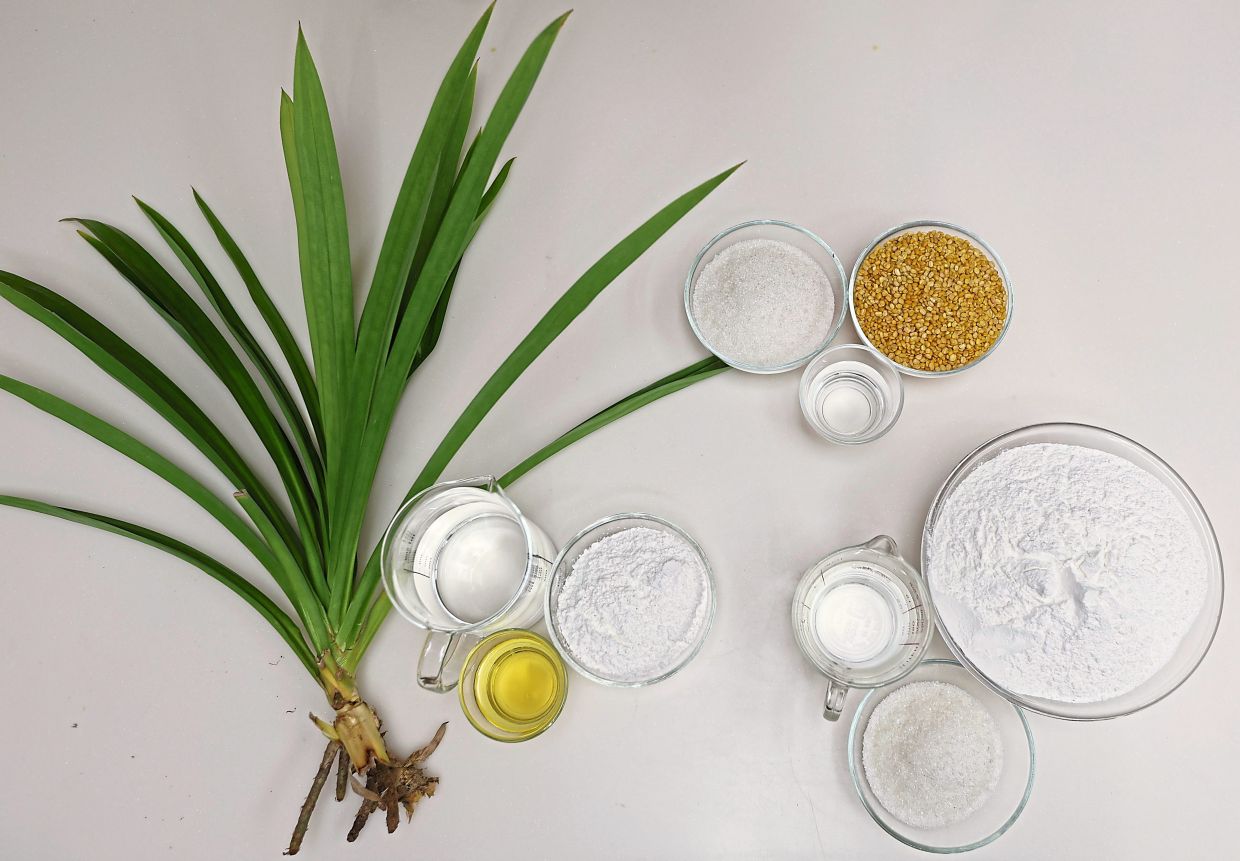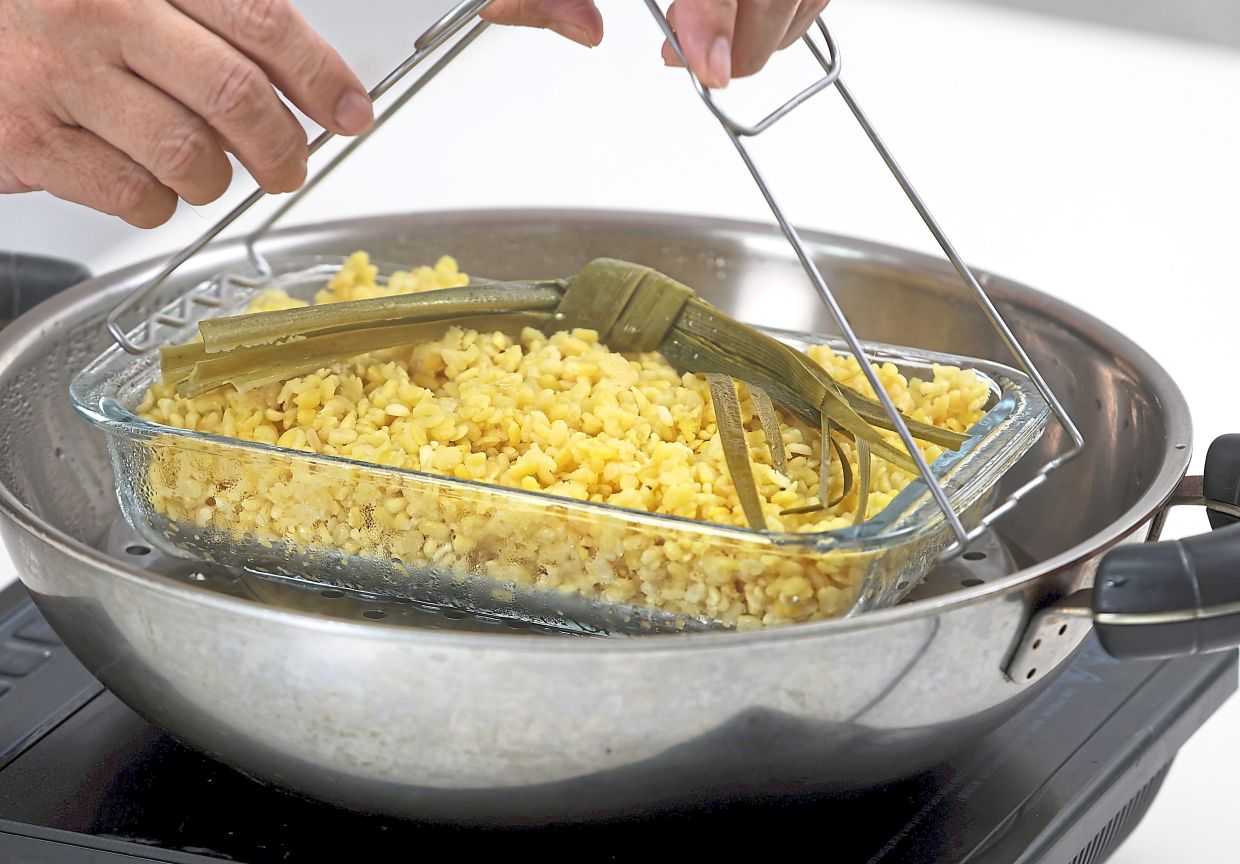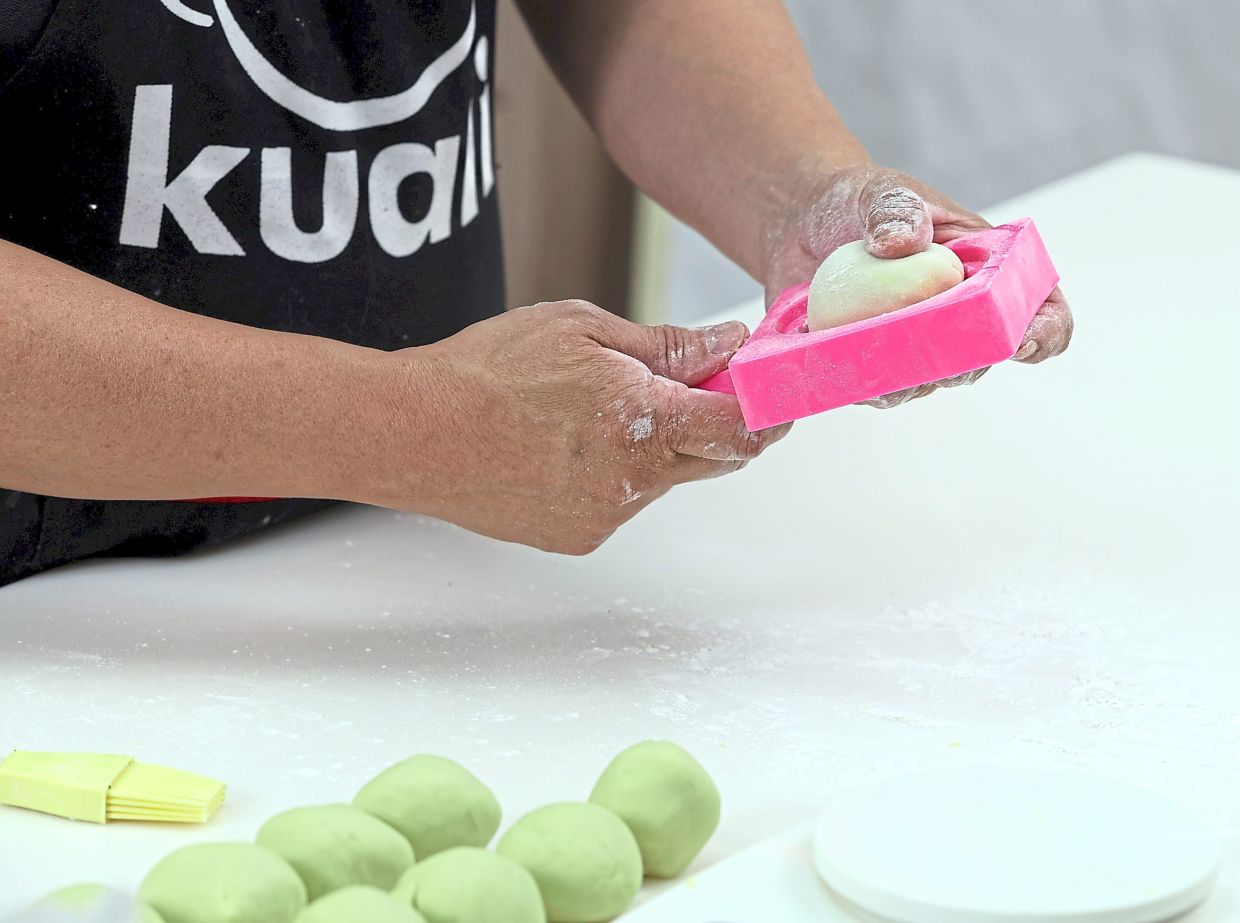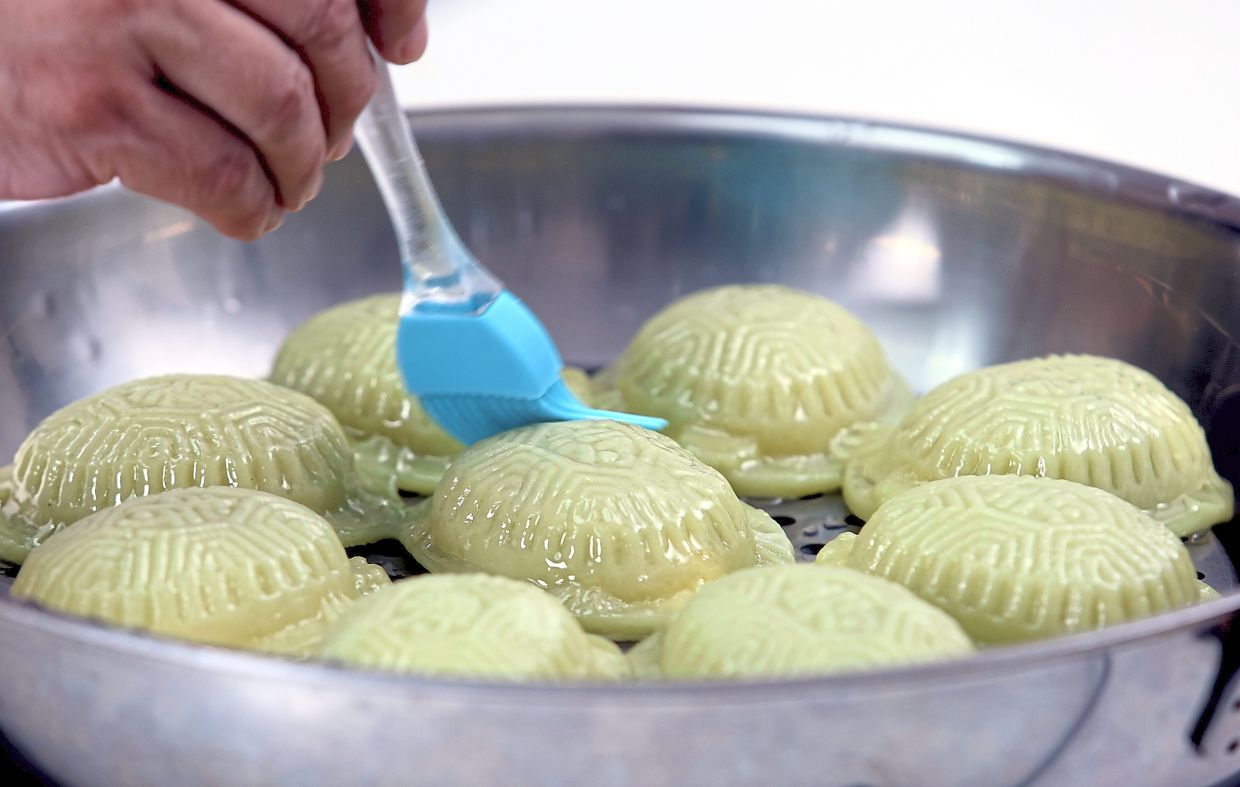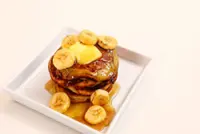Kuih angku is a Chinese sweet dumpling with a sticky skin made of glutinous rice flour and a filling of hulled mung beans.
Shaped like a tortoise resting on a lily pad, it is traditionally dyed red, hence its name which literally translates to “red tortoise cake.”
This dessert is moulded like tortoise shells because the Chinese believe that tortoises have a long life span and this treat will bring longevity.
Traditional wooden moulds would have the Chinese word for longevity carved on them.
Because of the auspicious symbolism, it is usually served during festivals and important occasions such as new births and presented as offerings to deities.
While red tortoise cakes remain the constant favourite, it is becoming common to see a variety of these kuih on sale.
One of the popular variations is the one covered in pandan green skin and filled with ground peanuts or shredded coconut.
To make this kuih, the tortoise mould is a must.
You can experiment with a cheap plastic one that sells for about RM2, or you can invest in a wooden one for about RM20.
In this recipe, we use fresh pandan juice to infuse the skin with its signature green hue and fragrant aroma.
Be careful to exclude the pale portion at the base of the leaves when blending, because it can add bitterness to the juice.
My mother-in-law, who shared this recipe with us, advised us to add knotted pandan leaves over the mung beans midway into the steaming duration as prolonged steaming will cause it to lose flavour.
To prevent the glutinous rice flour from sticking, you will need to regularly dust your hands, the mould and the work surface with rice flour, not glutinous rice flour.
After the kuih is steamed, brush them with oil to prevent them from sticking together and to intensify their colour as they cool.
It is best enjoyed when cooled completely, as the skin will firm up with a soft springy texture and a beautiful sheen.
Kuih angku
Filling
300g skinless mung beans, soaked 4 hours
100ml cold water
5 pandan leaves, knotted
220g sugar
Roux
100g rice flour
400ml cold water
20 pandan leaves
70g cooking oil
Dough
600g glutinous rice flour
120g sugar
100-200ml cold water
1 frond banana leaf, cut into 10cm circles
Extra rice flour to dust mould
Cooking oil to glaze
Directions
Steam soaked mung beans with water for 15 minutes, add pandan leaves and continue steaming for another 15 minutes.
Mash into a coarse meal, then stir in the sugar until combined.
Set aside to firm up in the freezer.
Cut the pandan leaves into small pieces and blend with water in an electric mill to create a purée.
Strain through muslin cloth or a tea sock to extract juice.
Pour 400ml of pandan juice into a saucepan and stir in rice flour and oil.
Bring to a simmer, stirring constantly until it thickens into a roux.
For the dough, blend the roux, flour and sugar in a food processor at low speed, trickling in water as needed until the dough becomes soft, smooth and pliable.
The amount of water needed depends on the humidity of the weather.
Dust the counter with rice flour and knead dough for about 5 minutes until springy. Cover with cling wrap and set aside to rest for 30 minutes.
When filling has firmed up in the freezer, roll into thumb-size balls of about 20g and set aside.
Cut the banana leaf into 10cm circles, then store in a covered container to keep from drying out.
To assemble the angku, dust hands with rice flour before breaking off 50g portions of dough and rolling these into a cup shape.
Place a ball of filling on the dough and pinch the edges together to seal.
Dust rolled kuih and mould with rice flour, then press the kuih into the mould.
Slam the mould hard against the cutting board to knock the kuih out, then brush off excess flour with a dry brush.
Place each kuih on a banana leaf circle and arrange on a steaming rack.
Steam over boiling water for 10 minutes.
Remove from the steamer and brush lightly with oil to glaze.
Set aside to allow them to cool completely and for the skin to firm up.




